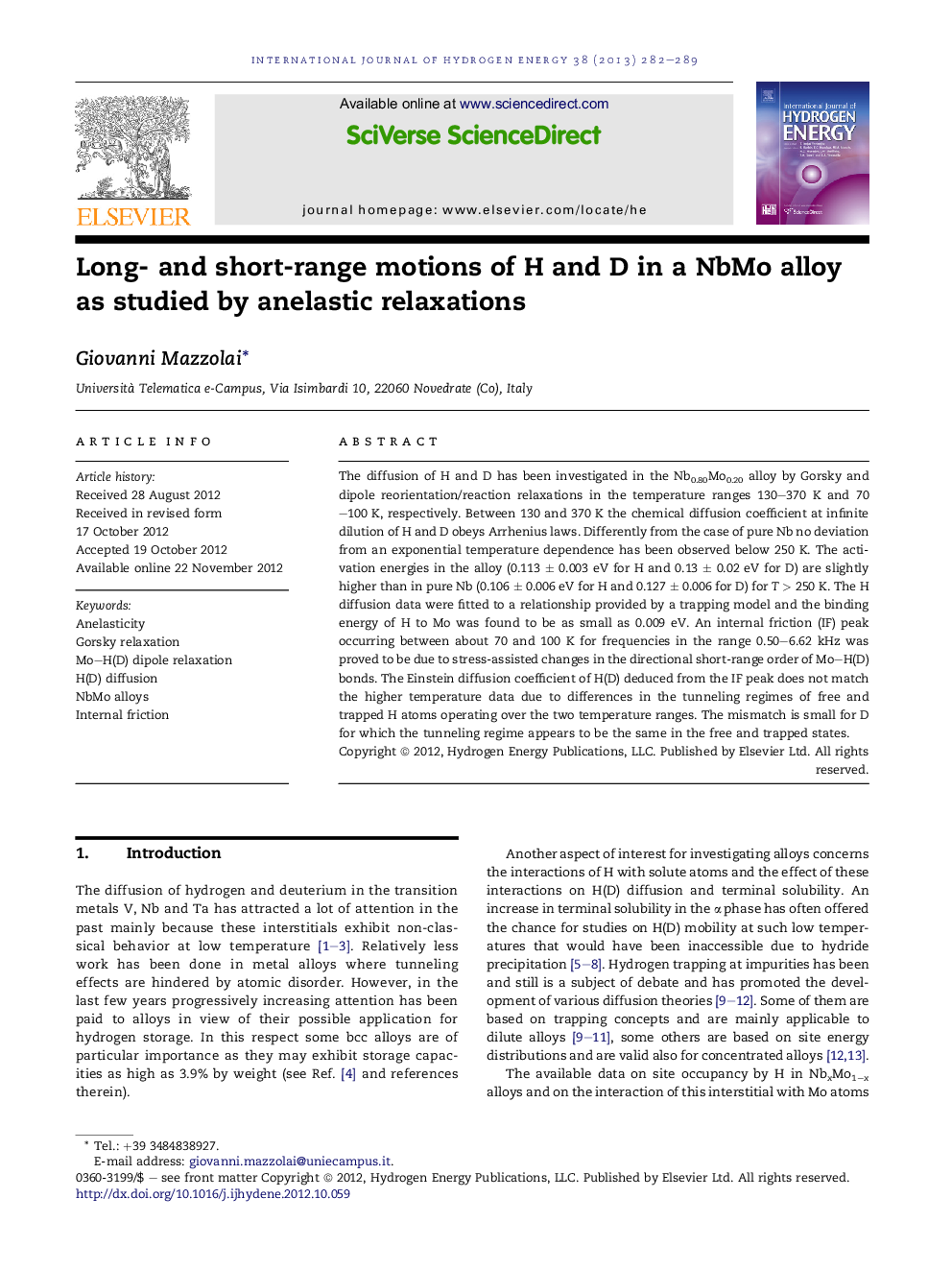| کد مقاله | کد نشریه | سال انتشار | مقاله انگلیسی | نسخه تمام متن |
|---|---|---|---|---|
| 1274374 | 1497544 | 2013 | 8 صفحه PDF | دانلود رایگان |

The diffusion of H and D has been investigated in the Nb0.80Mo0.20 alloy by Gorsky and dipole reorientation/reaction relaxations in the temperature ranges 130–370 K and 70–100 K, respectively. Between 130 and 370 K the chemical diffusion coefficient at infinite dilution of H and D obeys Arrhenius laws. Differently from the case of pure Nb no deviation from an exponential temperature dependence has been observed below 250 K. The activation energies in the alloy (0.113 ± 0.003 eV for H and 0.13 ± 0.02 eV for D) are slightly higher than in pure Nb (0.106 ± 0.006 eV for H and 0.127 ± 0.006 for D) for T > 250 K. The H diffusion data were fitted to a relationship provided by a trapping model and the binding energy of H to Mo was found to be as small as 0.009 eV. An internal friction (IF) peak occurring between about 70 and 100 K for frequencies in the range 0.50–6.62 kHz was proved to be due to stress-assisted changes in the directional short-range order of Mo–H(D) bonds. The Einstein diffusion coefficient of H(D) deduced from the IF peak does not match the higher temperature data due to differences in the tunneling regimes of free and trapped H atoms operating over the two temperature ranges. The mismatch is small for D for which the tunneling regime appears to be the same in the free and trapped states.
► The H diffusion coefficient shows exponential T-dependence in Nb80Mo20 alloy.
► A damping peak occurring at 100 K is proved to be an Mo–H interaction effect.
► The Mo–H binding energy is small as well as the attempt frequency of trapped H.
► The high temperature diffusion data do not match with the low temperature ones.
► This is because distinct tunneling regimes are operative for free and trapped H.
Journal: International Journal of Hydrogen Energy - Volume 38, Issue 1, 11 January 2013, Pages 282–289